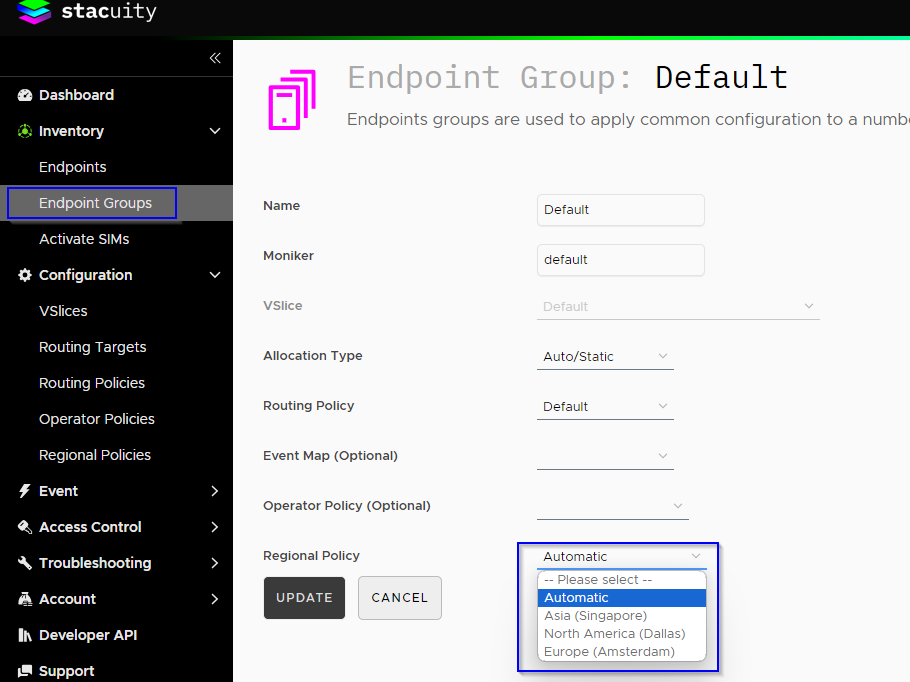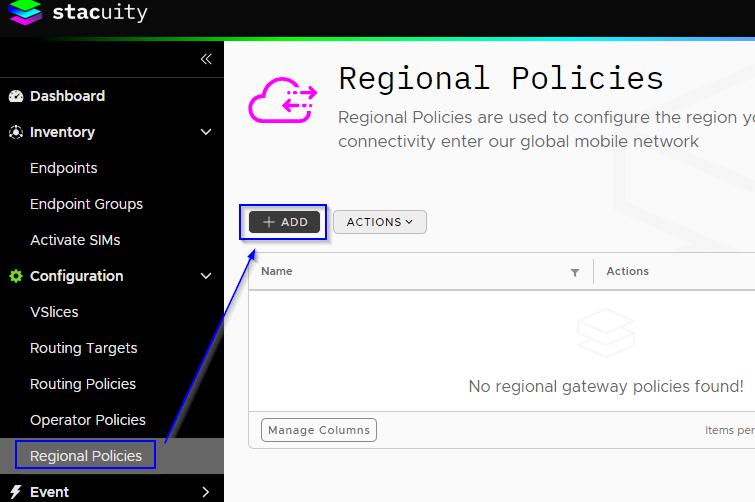Regional Policies
Regional Policies are used to configure the region your endpoint connectivity enter our global Stacuity network
Our Stacuity SIMs have global coverage which is achieved by agreements shared between all the global mobile network operators around the world. These mobile operators share a global private network between them to exchange network connectivity. Our Stacuity network is connected to this private global mobile network at specific locations around the world.
When using our Stacuity network, your endpoint connection, must pass though the global mobile network, and enter our Stacuity network from where you can make use of all the features in our portal, like accessing the internet or connecting directly to your backend through a private VPN connection.
Regional Policies allow you to choose in which region your endpoint connectivity enters our Stacuity network.
There are many use cases for which Regional Policies cater for, but primarily it allows your data connection to be closer to your target location (where you have your VPN server hosted for example), to reduce network latency. Another common use case is to keep your "Data Packets" inside a certain region or country border for legal requirements in certain markets.
Regional Policies can be selected and applied to a group of Endpoints, by selected a Regional Policy on an 'Endpoint Group'.

We have a few predefined 'Regional Policies' available to choose from. The 'Automatic' option is worth mentioning as it will allow your endpoints to automatically use the nearest physical location to enter our Stacuity network. For example, the connection from an endpoint in Hong Kong, will enter our Stacuity network via Singapore, when that same endpoint is roaming in Canada, the connection will enter through Dallas, and when roaming in France, the connection through Amsterdam.
You can also create and configure your own user defined 'Regional Policies'. This is done by navigating to the 'Regional Policies' in the Configuration area in the Stacuity Portal, and clicking on the 'Add' button:

On the 'Add' view, you need to first of all specify a name and moniker for your 'Regional Policy', then after clicking on create, you will be taken to the 'Rules' tab, where you can define the rules per country/network:

The location where an endpoint connection enters our Stacuity network, is called a 'Regional Gateway'. Stacuity has strategically placed regional gateways around the world to choose from.
The first entry in the grid view is the 'Default' option, this indicates the 'Regional Gateway' which will be used, unless overridden by a country/network.
A 'Regional Gateway' selected on a country, means that when an endpoint is in that country, it will use the specific 'Regional Gateway' to enter our Stacuity network.
A 'Regional Gateway' selected on a network, means that when an endpoint is on that network, in that country, it will use the specific 'Regional Gateway' to enter our Stacuity network.
The 'inherit' option is used to indicate that the 'Regional Gateway' is inherit from the parent.

When you are done configuring your new 'Regional Policy', it will be available on the Endpoint Group to be chosen:

Updated 22 days ago
